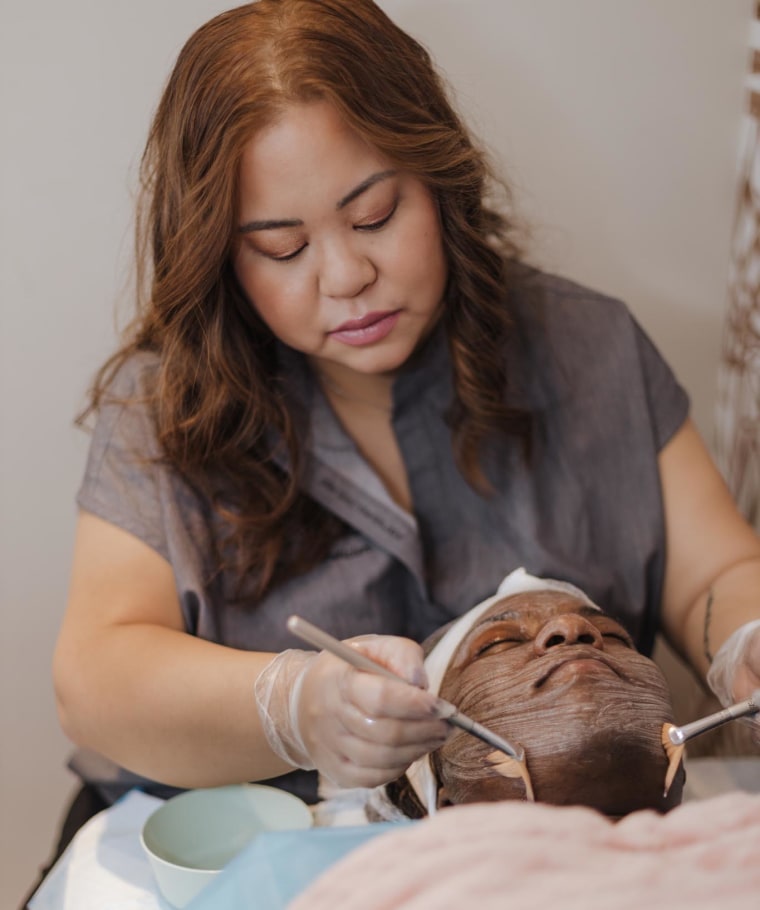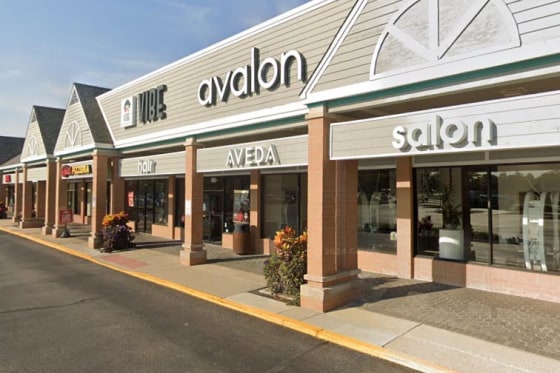In the suburbs of Chicago, Bonnie Conte didn't see the wave of spring break pedicures she’s used to. Brooklyn, New York, aesthetician Kijana “Yaya” Simuel saw 75% of her clients cancel their appointments the week President Donald Trump announced his global tariffs. And Guy Lacey, who sells his products to salons, said those stores are seeing clients going longer between haircuts.
Salon owners and other beauty professionals across the country said they are seeing a shift in behavior among their clients in recent weeks — as economists, investors and CEOs have been warning about an economic slowdown following widespread tariffs declared by President Donald Trump. It’s a shift in behavior that is not only hurting salon workers’ paychecks but also could be a warning sign for the wider economy.
When times get financially tight for Americans, a trip to the salon has been one of the first discretionary purchases to go. While people won’t entirely stop getting their hair cut or colored during uncertain economic times, salon-goers in the past have stretched out the time between appointments, started doing more beauty maintenance at home and forgone treatments seen as more like luxuries, such as massages and facials.
“My clients are starting to see layoffs, and they don’t know if they are going to be in the next round,” Simuel said. “Even though they are making money now, it doesn’t matter — they have to prioritize their business needs.”

The trend emerged during the Great Recession that began in 2007, and industry professionals say they are starting to see it again.
“What we’re seeing on the salon side so far is somewhat the same as we saw back in 2007 — customers are now taking longer between visits,” said Lacey, a vice president with Salon Service PRO, which sells supplies and equipment directly to salons. “Pre-bookings are down across most of our salon network, and the thing that’s really been happening in the last two to three weeks is cancellations. We’re starting to see a lot more cancellations.”
Economists have increasingly warned of a recession since Trump ratcheted up tariffs on countries around the globe, putting a 10% tariff on all products coming into the United States and a 145% tariff on all goods coming to the United States from China. He has also put a 25% tariff on imported cars, steel and aluminum. That has caused businesses to warn of rising prices, which could ultimately lead to less spending by consumers and higher unemployment. The stock market has been on a roller coaster since the start of the month, with the major index down around 10% this year.
The economic jitters on Wall Street have been spreading to Main Street. Consumer sentiment fell 11% in April to the lowest levels in 12 years, according to a survey by the University of Michigan. While consumer spending has largely remained intact, there are indications that cracks are showing up at the salon.
Bonnie Conte, owner of Avalon Salon and Day Spa in Lake Zurich, Illinois, said she started noticing customers cutting back on their spending at the salon over the past several years, stretching out appointments for their hair and not coming as frequently for facials and nail appointments.
She was hoping business would start to turn around this month, when more customers usually come in for pedicures, new haircuts and fresh color for spring. So far, though, they aren’t showing up in the numbers she was hoping for.
“March is usually when the light switch flips and people start coming back for a change with a new hair color or to get a pedicure because they are going on spring break. This March has been highly disappointing. It didn’t come anywhere close to what my anticipated goals were,” said Conte, who said most of her clients make well over $100,000 a year.
Not all salons, though, are bracing for a slowdown. In Grand Junction, Colorado, a largely rural area on the western side of the state, Bobbi Springer, who runs Allure Beauty Bar, said her sales are up 5% this year. The growth comes on top of a disappointing 2024, when, she felt, her clients were pulling back on spending amid fears over the outcome of the election.
“In 2024, the feeling was pretty doom and gloom. I was starting to think: Am I going to be able to keep doing this? What does this look like if we can’t turn things around?” Springer said. “To see that we’re up 5% over last year, that is huge.”
But Lacey said he’s seeing a slowdown trend show up in the data for the network of salons he supplies. Instead of clients’ coming for haircuts every six to eight weeks, they are stretching it out to 10 or 12 weeks. Hair extensions, which can cost more than $800, are down by a third. Lacey expects his sales for the year will be flat, which he said he would consider a victory.
“February, things kind of mellow out, March started to get a little choppier, and April was when, obviously, there was the tariff announcement and things started getting a lot more uncertain,” Lacey said.
Not only are the salons he works with experiencing drop-offs in appointments, but they also face higher costs as a result of Trump’s various tariffs. Foil used to highlight hair has increased 20% because of the tariffs on steel and aluminum, which is also driving up the cost of steel hair spray cans, Lacey said.
A company from which his business gets its brushes, clips and combs announced it would no longer sell its products in the United States, saying the tariffs would make them unaffordable.
“The scary thing is that, in the beauty industry, we operate on relatively low net profit margins. So there really isn’t an ability to ride the wave of a 10% cost of goods increase,” Lacey said.
Genevieve Santos-Bann, who runs a coaching and consulting business for aestheticians in New York City, said she has been hearing about a drop-off in business from about 80% of the aestheticians she works with. Business was starting to slow throughout 2024, before the presidential election, and now 2025 is shaping up to be even worse.

“A lot of them are experiencing a slowdown, definitely,” Santos-Bann said. “Customers are feeling the effect of either layoffs or the threat of layoffs. I feel like the fear of getting laid off is just as real as it happening, so people are being proactive and cutting back on ancillary services, such as facials.”
Many aestheticians operate as independent businesses rather than as employees, so they have little safety net when business starts to slow down. Santos-Bann said she has been hearing some aestheticians talk about delivering for DoorDash to make extra money, while others are contemplating switching careers.
“A lot of people are going into panic mode,” she said.
Simuel, an aesthetician in Brooklyn, said business has started to rebound over the past few weeks after it ground to a halt the week Trump announced his tariffs. But she’s still hearing concerns from even her high-income clients about the risk of losing their jobs or watching their 401(k) balances shrink.
Amid the risk of business dropping off, she’s also seeing higher prices for the materials she uses as a result of the tariffs. She expects the cost for one product she buys directly from China to go from around $300 to nearly $900 with the added tariffs.
“I have a lot on the line; I’m taking care of my family down South after my father passed. All I have is my aesthetician’s license; I don’t have anything else,” Simuel said.
In Pasadena, California, Jeff Mendoza, an aesthetician who focuses on male clients, said he’s still fully booked but is seeing his clients opt for less expensive treatments, forgo add-on services and wait longer between appointments.
“I do think the industry as a whole is bracing themselves,” Mendoza said. “It’s like you’re standing at the edge of the beach and watching a tsunami forming and you don’t know how big it is going to be or when it’s going to hit, but you know it’s coming.”
Larger salons and those in destination locations or higher-income areas will most likely be able to weather any economic downturn and are less likely to feel the impact from the most recent market turmoil, said Allan Share, president of the Spa Industry Association. He said he has still been hearing a lot of optimism from salons at the recent trade shows he has attended.
“If you’re a multi-unit franchise, if you’re the Ritz-Carlton, the JW Marriott, the resort destinations, they know no bounds,” Share said. “Their customers may complain about their 401(k)s, but it doesn’t stop them from going to the spa.”

